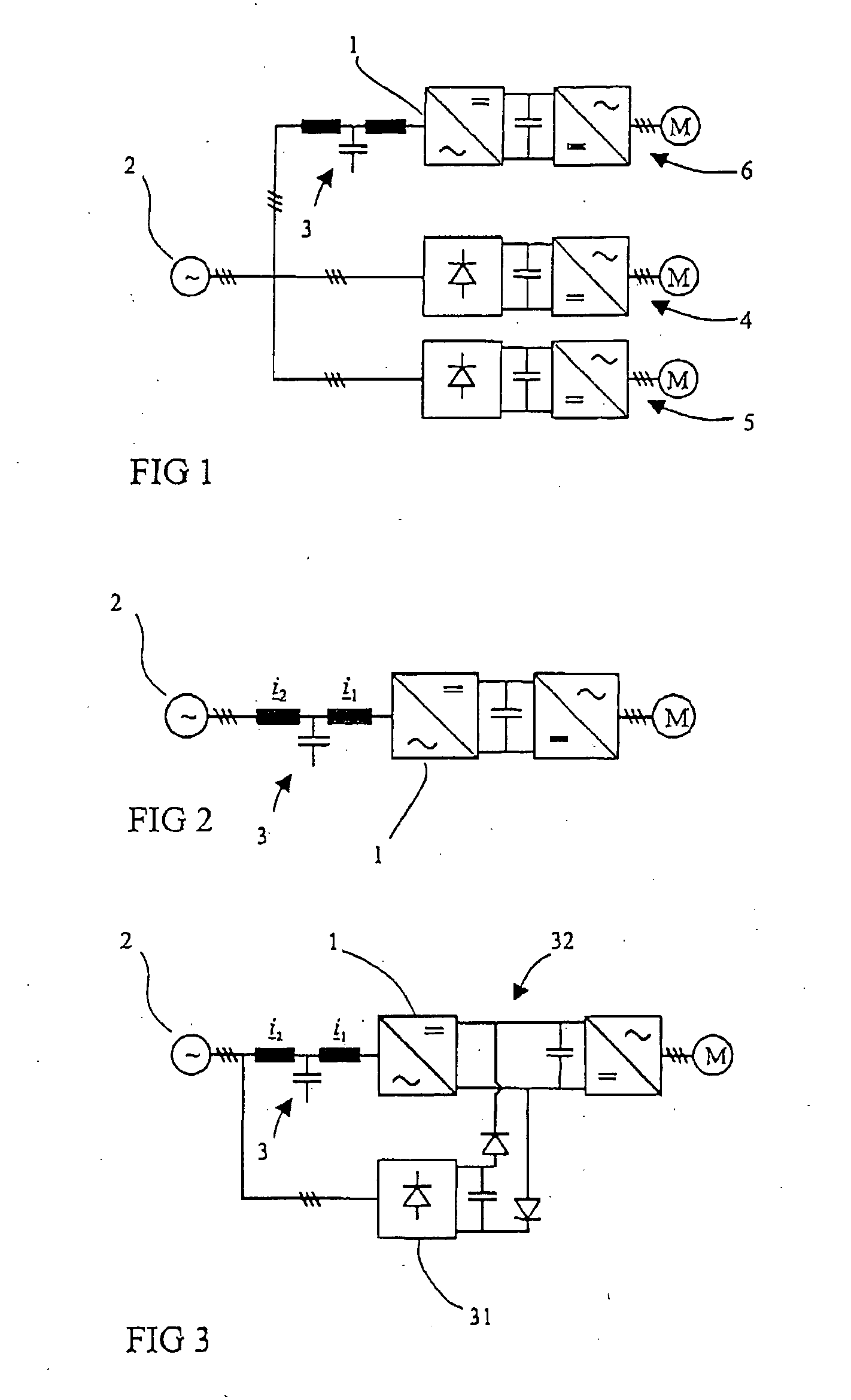Method and arrangement in connection with network inverter
a network inverter and network technology, applied in the direction of harmonic reduction arrangement, power conversion system, circuit arrangement, etc., can solve the problems of deteriorating current quality, current distortion or disturbance of network voltage, and distortion of the curve form of network voltage, so as to improve the quality of electricity, improve the features of network inverter, and reduce current distortion
- Summary
- Abstract
- Description
- Claims
- Application Information
AI Technical Summary
Benefits of technology
Problems solved by technology
Method used
Image
Examples
Embodiment Construction
[0022] A DTC-controlled network inverter is disclosed in patent application PCT / FI02 / 00221 and in publication [6]. The inverter control is based on a virtual flux linkage vector of the inverter Φ defined as integral of a space vector u of the inverter voltage, and on synchronic coordinates linked thereto, where current vector control is performed. The virtual flux linkage vector of the inverter is estimated by equation
Φ1=∫u1dl
[0023] To control the network current harmonics of the inverter, in accordance with the method there is determined a unit vector sv corresponding to each one or more controllable sequence. For instance, in the case of the fifth negative harmonic sequence (5−) the unit vector is
s5−=sα5−+jsβ5− (2)
[0024] The unit vector is rotated at the angular speed of the corresponding harmonic sequence in the same rotation direction with the corresponding harmonic sequence. For instance, in the case of the sequence 5−the unitvector can be formed as follows
s5−=cos(5ωst)−j...
PUM
 Login to View More
Login to View More Abstract
Description
Claims
Application Information
 Login to View More
Login to View More - R&D
- Intellectual Property
- Life Sciences
- Materials
- Tech Scout
- Unparalleled Data Quality
- Higher Quality Content
- 60% Fewer Hallucinations
Browse by: Latest US Patents, China's latest patents, Technical Efficacy Thesaurus, Application Domain, Technology Topic, Popular Technical Reports.
© 2025 PatSnap. All rights reserved.Legal|Privacy policy|Modern Slavery Act Transparency Statement|Sitemap|About US| Contact US: help@patsnap.com



